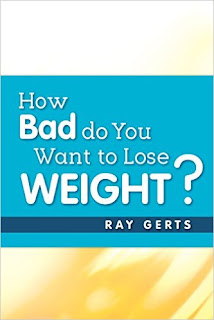Author Laurie J. Goodyear, PhD, is a senior investigator at Joslin Diabetes Center
I had to copy this post for my readers because this author has it right. Most dieters are not doing the right exercise to help them burn fat. Most people step on the scale and all they see is the number and they don't bother thinking about what the number means. Most of the time it means you adding more fat, which means you need to lose fat and that's more than just losing weight.
Most people know that exercise burns fat. It’s the reason most people hit the treadmill in the first place.
But fat isn’t just a place we park extra calories. “The tissue has a lot of other properties.
“Exercise really makes fat healthier and helps it burn more energy.”
Specifically, she says, exercise shrinks the size of individual fat cells, and the cells develop more energy-producing parts called mitochondria.
That means that fat tissue is burning more calories, even at rest, Goodyear says.
“What we’ve realized is that fat isn’t simply storage,” she says. “We see about 4,000 genes in fat tissue change with exercise. It’s not just that fat cells get smaller.”
Exercise also affects the lining of blood vessels, a layer of tissue called the endothelium that’s just a single cell thick. When this layer of tissue is damaged, it’s easier for dangerous blood clots to form.
Science has discovered that when the body is inactive, the cells in the endothelium get sluggish and don’t sit in the vessel wall properly. But exercise, which causes blood to flow more swiftly and under greater pressure, realigns the cells.
About 12 hours after a single bout of exercise, the cells have repositioned themselves to be in line with the flow of blood. This helps blood vessels work better, keeping them open and elastic, rather than stiff, narrow, and clogged.
In the brain, recent studies have shown that physical activity makes the brain more connected by bulking up the white matter, the wiring that transmits signals between nerve cells. And older adults who exercise have more gray matter in areas of the brain responsible for self-control, memory, and decision-making.
Exercise also beats medication for some ailments. In head-to-head tests, it works as well or better than pills for depression. In other conditions, like Alzheimer’s and arthritis, it’s been shown to delay disability.
It’s enough to convince anyone to lace up. Or at least it should be.
Yet that message seems to be falling on deaf ears. This year’s survey by the Physical Activity Council found that 28% of Americans say they are totally inactive. It’s the highest level of physical inactivity measured by the survey since 2007.
To keep himself healthy, he tracks his own steps every day.
If you're ready to get going but not sure where to start, Thyfault recommends three levels of fitness.
He says level one is just to walk and keep track of your steps. You can do this with a trendy fitness tracker, but even an inexpensive pedometer or a smartphone app will do the trick. Your goal should be at least 8,000 steps a day.
Once you’re hitting that goal on a regular basis, level two is to do three to five defined exercise sessions each week, with a goal of 30 to 45 minutes of aerobic activity -- like running or pedaling on an elliptical -- each time.
Level three is to add a couple of days of resistance training each week.
Goodyear agrees and says getting more exercise will make a difference you can feel. “I always feel that if I’m consistently exercising I have more energy. People sleep better when they exercise routinely, and then your body just becomes more efficient,” she says. When your body is working better you feel better, your happier and you have more energy.
I write E-books and blogs about fitness and weight loss. I’ll show you the cheapest, inexpensive way to lose weight. Right now and for a limited time, my E-book, "How Bad Do You Want To Lose Weight”, is $1.99 on all the major sites. Amazon.com, iBooks, B&N.com, Scribd.com, Kobo.com and many others in several other countries.







